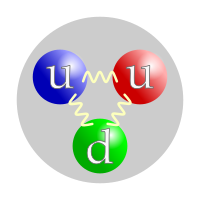
Photo from wikipedia
Abstract Acrylonitrile (ALN) and acetonitrile (ATN) are two important interstellar molecules that contain nitrogen atoms. Herein, we explore the proton transfer processes occurring in gaseous clusters of ALN and ATN… Click to show full abstract
Abstract Acrylonitrile (ALN) and acetonitrile (ATN) are two important interstellar molecules that contain nitrogen atoms. Herein, we explore the proton transfer processes occurring in gaseous clusters of ALN and ATN molecules with the aid of synchrotron vacuum ultraviolet radiation. We investigated the proton transfer phenomenon by use of time-of-flight mass spectrometry as well as theoretical calculations. We observe that the mass spectra of ALN and ATN clusters are apparently different from each other. In the mass spectrum of ALN clusters, the peaks related to un-protonated cluster cations are dominant. Unlike the ALN clusters, the protonated cluster cations are dominant in the mass spectrum of ATN clusters. These results are attributed to the different conjugate and hyperconjugate molecular structures in ALN and ATN, respectively. Theoretical calculations show that the conjugation effect between the πC=C orbital and πC≡N orbital in ALN induces a high proton transfer barrier that determines the dominant peaks of its non-protonated clusters cations. Conversely, the hyperconjugation between the σCα-H and πC≡N orbital in the ATN molecule determines that the proton transfer process in ATN is a low-barrier or even a no-barrier process. This favors the formation of protonated clusters. The present results reveal that ALN clusters are more aprotic than those consisting of ATN, and a relative high energy barrier is needed to surmount the proton transfer process of ALN clusters. This property of ALN makes it an appropriate candidate molecule to form the membrane alternative in the liquid methane lakes of Titan. ATN is not an appropriate candidate.
Journal Title: Journal of Electron Spectroscopy and Related Phenomena
Year Published: 2020
Link to full text (if available)
Share on Social Media: Sign Up to like & get
recommendations!